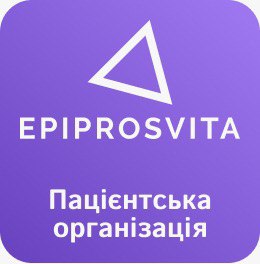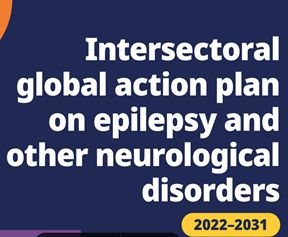Вибір редактора том 113: Аналіз екзома, зосереджений на генах,
пов’язаних з епілепсією, у дітей та дорослих
із раптовою нез’ясованою смертю.
Markus Reuber, доктор медичних наук, академічне відділення неврології, Університет Шеффілда, Королівська лікарня Халламшир, Glossop Road, Шеффілд, S10 2JF
Коли Дарвін описував його основні принципи, «природний відбір» вважався ключовим рушієм еволюційних змін – ідея, яку Герберт Спенсер у 1864 році охарактеризував як «виживання найпристосованіших». Основна
ідея полягала в тому, що особи або види, які краще пристосовані до свого середовища, мають відносну репродуктивну перевагу над своїми конкурентами. Відтоді ми дізналися набагато більше про взаємодію між генами та середовищем. Ми почали розуміти, як епігенетичні механізми можуть сприяти успадкуванню вивчених моделей поведінки – і, таким чином, як досвід наших предків може гарантувати, що ми будемо оптимально підготовлені до середовища, яке ми успадкували від них (1).
Паралельно з еволюцією нашої генетичної адаптації до навколишнього середовища відбувалася еволюція її розуміння. Цю еволюцію зумовила наша низька толерантність до нездатності зрозуміти те, що відбувається з нами або навколо нас. Як вид і як індивіди ми маємо велике бажання пояснити свій досвід. Ми маємо набагато більшу ймовірність засмучуватися через події, які ми не можемо пояснити, ніж через ті, яким у нас є пояснення (навіть якщо це пояснення неправильне).
Один контекст, у якому це стає очевидним у клінічній медицині, — це коли людина помирає несподівано й без пояснення причин. У дітей цей сценарій називається раптовою смертю немовляти (SID), у дорослих –
раптовою несподіваною смертю (SUD). Хоча багато хто може віддати перевагу раптовій і несподіваній смерті для себе, ніж смерті після тривалого періоду страждань, смерть часто завдає особливої травми тим, хто
залишився, коли вона є несподіваною та непоясненою.
Мій вибір редактора з поточного тому Seizure – це стаття Sarah E. Buerki et al. вивчення можливих пояснювальних генетичних внесків у SID та
SUD (2). Попередні генетичні посмертні дослідження в основному зосереджувалися на генах, пов'язаних з кардіоміопатіями та серцевими аритміями. Потенційно релевантні генетичні варіанти в таких генах були
виявлені приблизно у 20% осіб, чия смерть була класифікована як SID, з аналогічними показниками виявлення у дорослих, які померли SUD (3-5). Гени, пов’язані з серцевою патологією, також досліджувалися у людей, які, як вважалося, померли від SUD у контексті епілепсії (SUDEP): нещодавній огляд таких досліджень повідомляв про вірогідну частоту виявлення патогенних генів близько 11% (6).
Генетичне посмертне дослідження Buerki et al. Особливо зосереджено на 365 варіантах, пов’язаних з епілепсією – на підставі того, що певна частка SUD може бути пов’язана з SUDEP, а не головним чином серцевими
причинами. Ймовірні патогенні варіанти були виявлені в 19/155 (12,2%) випадків SID і в 6/45 (13,3%) випадків SUD. Потенційна актуальність цього відкриття підтверджується спостереженням про те, що генетичні варіанти, пов’язані з епілепсією, частіше виявлялися в підгрупі випадків SUD, які, ймовірно, були пов’язані з епілепсією (тобто SUDEP): 4 з цих 9 випадків (44,4%) виношував такі варіанти. Звичайно, наявність генетичного варіанту, пов’язаного з епілепсією, не означає, що всі ці особи мали епілептичні припадки або померли від SUDEP. Однак цей висновок підтверджує ідею про те, що SUDEP може пояснити більше випадків SID та SUD, ніж передбачалося раніше, і що більший пріоритет слід приділяти профілактиці SUDEP через покращення послуг з лікування епілепсії.
Посилання
(1) Ladd-Acosta C, Fallin MD. The role of epigenetics in genetic and environmental epidemiology. Epigenomics 2016;8:271-83.
(2) Buerki SE, Haas C, Neubauer J. Exome analysis focusing on epilepsy- related genes in children and adults with sudden unexplained death. Seizure. 2023; 113:66-75.
(3) Neubauer J, Lecca MR, Russo G, Bartsch C, Medeiros-Domingo A, Berg er W, Haas C. Post-mortem whole-exome analysis in a large sudden infant death syndrome cohort with a focus on cardiovascular and metabolic genetic
diseases. Eur J Hum Genet. 2017;25:404-409.
(4) Tester DJ, Wong LCH, Chanana P, Jaye A, Evans JM, FitzPatrick DR, Evans MJ, Fleming P, Jeffrey I, Cohen MC, Tfelt-Hansen J, Simpson MA, Behr ER, Ackerman MJ. Cardiac Genetic Predisposition in Sudden Infant Death
Syndrome. J Am Coll Cardiol. 2018;71:1217-1227.
(5) Guo L, Torii S, Fernandez R, Braumann RE, Fuller DT, Paek KH et al. Genetic Variants Associated With Unexplained Sudden Cardiac Death in Adult White and African American Individuals. JAMA Cardiol. 2021;6:1013-1022.
(6) Chahal CAA, Salloum MN, Alahdab F, Gottwald JA, Tester DJ, Anwer LA, So EL, Murad MH, St Louis EK, Ackerman MJ, Somers VK. Systematic Review of the Genetics of Sudden Unexpected Death in Epilepsy:
Potential Overlap With Sudden Cardiac Death and Arrhythmia-Related Genes. J Am Heart Assoc. 2020;9:e012264.
Вибір редактора том. 112: Модифікована дієта Аткінса для резистентної епілепсії: систематичний огляд і мета-аналіз рандомізованих контрольованих досліджень.
Markus Reuber, доктор медичних наук, академічне відділення неврології, Університет Шеффілда, Королівська лікарня Халламшир, Glossop Road, Шеффілд, S10 2JF
Голодування та інші маніпуляції зі звичайним режимом харчування використовуються для лікування епілепсії вже понад дві з половиною тисячі років. Наукова ера дієтичного лікування епілепсії починаєтся з 1920-х років, коли була введена кетогенна дієта (KD), щоб імітувати сприятливий вплив голодування на епілептичні напади. Ця дієта широко використовувалася в
1940-х роках, але прийшла в занепад з появою більш ефективних фармакологічних методів лікування епілепсії, таких як фенітоїн. Її «повторне відкриття» в 1990-х роках було пов’язано з драматичним впливом цієї дієти на контроль судом у дворічного хлопчика на ім’я Чарлі. Його дивовижне покращення завдяки KD спонукало його батька заснувати The Charlie Foundation, і це надихнуло на виробництво фільму з Мерріл Стріп у головній ролі, який відновив інтерес до цього немедикаментозного лікування в США та інших країнах (1).
Протягом останніх трьох десятиліть було накопичено докази ефективності KD із співвідношенням жиру до білка та вуглеводів 4:1, і KD стала золотим стандартом лікування епілепсії при метаболічних розладах,
таких як протеїн-транспортер глюкози 1 ( GLUT-1) синдром дефіциту або дефіцит піруватдегідрогенази (2). Хоча докази ефективності за межами цих рідкісних станів були оцінені як відносно низькоякісні з огляду на
відсутність засліплення та невеликий обсяг більшості досліджень, останній Кокранівський огляд прийшов до висновку, що до 55% дітей можуть досягти відсутності нападів за допомогою KD через три місяці, тоді як до 85% дітей досягають >50% зменшення нападів (3). Механізми, за допомогою яких KD досягає протинападового ефекту, залишаються невизначеними. Цілком можливо, що різні механізми актуальні для різних пацієнтів (4). На жаль, клінічне використання КД пов’язане з кількома практичними проблемами, які лише частково вдалося подолати завдяки наявності спеціальних дієтичних продуктів. Запровадження дієти зазвичай передбачає госпіталізацію, для її дотримання потрібен ретельний моніторинг метаболізму з аналізами крові та сечі, і низький вміст вуглеводів у KD створює проблему для людей, які можуть самостійно вживати їжу, яка їм подобається. Крім того, дієта KD може бути пов’язана з побічними ефектами, такими як нудота, блювота, діарея та камені в нирках, і існують занепокоєння щодо її довгострокової безпеки.
Той факт, що багато пацієнтів відмовляються від кетогенної дієти з цих причин, стимулював інтерес до дієт із позитивним впливом на епілепсію, яких легше дотримуватися – таких як модифікована дієта Аткінса (MAD). Як і KD, ця дієта обмежує кількість вуглеводів, але вона спрямована на набагато легше досяжне співвідношення жиру до вуглеводів 1:1 без будь-яких обмежень, пов’язаних із прийомом їжі (5). Мій вибір редактора з поточного тому Seizure - систематичний огляд та мета-аналіз, ґрунтується на дослідженнях за участю 575 пацієнтів, 288 з яких MAD як засіб для лікування епілепсії. Це важливе доповнення до літератури, об’єднавши результати кількох менших досліджень. Він робить висновок, що і дорослі, і діти, які отримують MAD плюс стандартну медикаментозну терапію, мають у шість разів більше шансів досягти >50% зниження частоти нападів, ніж ті, хто отримує звичайний режим харчування плюс медикаментозну терапію. Хоча ще багато чого потрібно дізнатися про те, які пацієнти, швидше за все, найкраще реагуватимуть на MAD, сукупність попередніх первинних досліджень дозволила авторам зробити нові висновки одо ймовірної ефективності MAD у дорослих з епілепсією, частоти побічних ефектів та це підвищило точність оціненого ефекту цієї дієти.
Посилання
(1) Wheless JW. History of the ketogenic diet. Epilepsia 2008;49 Suppl 8:3-5.
(2) D'Andrea Meira I, Romão TT, Pires do Prado HJ, Krüger LT, Pires MEP, da Conceição PO. Ketogenic Diet and Epilepsy: What We Know So Far. Front Neurosci 2019; Jan 29;13:5.
(3) Martin-McGill KJ, Jackson CF, Bresnahan R, Levy RG, Cooper PN. Ketogenic diets for drug-resistant epilepsy. Cochrane Database Syst Rev 2020;6:CD001903. PMID: 30403286; PMCID: PMC6517043.
(4) Youngson NA, Morris MJ, Ballard JWO. The mechanisms mediating the antiepileptic effects of the ketogenic diet, and potential opportunities for improvement with metabolism-altering drugs. Seizure 2017;52:15-19.
(5) Kossoff EH, Dorward JL. The Modified Atkins Diet. Epilepsia 2008;49(s8):37–41.
(6) Mutarelli A, Nogueira A, Felix N, Godoi A, Dagostin CS, Castro LHM, Mota Telles JP. Modified Atkins diet for drug-resistant epilepsy: A systematic review and meta-analysis of randomized controlled trials. Seizure. 2023;112:77-83.
Markus Reuber, доктор медичних наук, професор, Академічне відділення неврології, університет Шеффілда, Королівська лікарня Халламшира, Glossop
Road, Sheffield, S10 2JF
Мій вибір як редактора з поточного випуску журналу «Seizure» - це ретроспективне обсерваційне когортне дослідження Colin B. Josephson (Colin B. Josephson) зі співавторами, метою якого було вивчення клінічних та соціально-економічних особливостей, що впливають на ризик смертності пацієнтів з пізнім початком епілепсії (1). На основі медичних записів понад 1 000 літніх людей з епілепсією та понад 10 000 контрольних осіб (>65 років), відібраних з понад 1 мільйона пацієнтів первинної медичної допомоги, у дослідженні описано десять кластерів ознак, пов'язаних з різними наслідками. Пацієнти з епілепсією були відібрані з бази даних первинної медичної допомоги за допомогою методу, спочатку розробленого для банку даних Secure Anonymised Information Linkage (SAIL) (Уельс, Великобританія), який раніше показав, що виявляє людей з епілепсією з чутливістю 88% і специфічністю 98% (2). Результати дослідження були отримані на основі зв'язку даних первинної медичної допомоги та електронної статистики госпітальних епізодів (HES). Додаткову інформацію про причину смерті було отримано з відповідного Офісу національної статистики Сполученого Королівства (ONS). Для характеристики кластерів був використаний підхід неконтрольованого машинного навчання. Хоча відношення ризиків (ВР) передчасної смерті було підвищено до 1,7 (95% ДІ 1,5-2,0) для осіб з пізнім початком епілепсії, ризик виявився набагато вищим у деяких кластерах, включаючи ті, що були названі «деменція і тривога» (ВР 5. 4; 95% ДІ 3,3-8,7), «пухлина головного мозку» (ВР 5,0; 95% ДІ 2,9-8,6), «внутрішньочерепний крововилив» (ВЧК) та «зловживання алкоголем» (ВР 2,9; 95% ДІ 1,8-4,8) та «ішемічний інсульт» (ВР 2,83; 95% ДІ 1,8-4,0). Причини смерті, пов'язані з нападами, були рідкісними і обмежувалися кластерами «ІХС», «ІХС та зловживання алкоголем» і «здорові жінки».
Це дослідження є гарним прикладом дослідницького підходу, який останніми роками все частіше використовується, чому сприяють пов'язані між собою
електронні бази даних і досягнення в галузі машинного навчання. Цей підхід до «великих даних» викликав дискусію, яка знайшла своє відображення у двох інших публікаціях поточного випуску «Напад»: Редакційна стаття Randi van Wrede та ін. (3) і відповідь Julie W. Dreier (4). Randi van Wrede та ін. вказують на те, що дослідження «big data» часто роблять широкі висновки без достатнього врахування внутрішньо-індивідуальної варіативності. Вони стверджують, що деякі дослідження «big data» в галузі епілепсії не розрізняють епілепсію як причину, наслідок або асоціацію з супутніми захворюваннями або іншими відповідними патологічними знахідками.
Крім того, вони підкреслюють ризик спрощених заголовків і вторинних звітів, що сприяють неправильному розумінню епілепсії - навіть якщо обмеження
оригінальної роботи були обговорені авторами в первинній публікації (3). На противагу цьому, Dreier et al. вказують на великий потенціал і досягнення
досліджень «big data». Вони посилаються на готову доступність даних, що забезпечує економічно ефективне використання обмежених дослідницьких фондів, а також на великий розмір когорт, що дозволяє включити мільйони суб'єктів і вивчити рідкісні експозиції або результати. Серед інших переваг підходу «big-data» вони називають зменшення упередженості відбору, доступність лонгітюдинальих даних, що дозволяє дослідникам вивчати довгострокові ефекти, а також усунення упередженості пригадування за допомогою проспективного збору даних. Вони нагадують читачам про підтвердження тератогенного впливу вальпроатів як про важливе відкриття, зроблене на основі досліджень «big-data». Рубрика «Вибір редактора» дає читачам можливість скласти власну думку: Чи є кластери ознак, які ідентифікують деяких пацієнтів як таких, що мають особливо високий ризик передчасної смерті, клінічно корисними? Чи можуть вони спонукати клініцистів зосередити свою увагу на групах пацієнтів з особливим ризиком - наприклад, на «здорових жінках»? - Або ж діагнози на основі «big data» настільки ч асто помилкові, а ознаки настільки розпливчасті, що аналіз Colin B. Josephson та ін., швидше за все, сприятиме необґрунтованому занепокоєнню і марному витрачанню ресурсів?
Література
(1) Josephson CB, Gonzalez-Izquierdo A, Engbers JDT, Denaxas S, Delgado-Garcia G, Sajobi TT, Wang M, Keezer MR, Wiebe S. Association of comorbid-socioeconomic clusters with mortality in late onset epilepsy derived through unsupervised machine learning. Seizure 2023, 111:58-67.
(2) Fonferko-Shadrach B, Lacey AS, White CP, Powell HWR, Sawhney IMS, Lyons RA, et al. Validating epilepsy diagnoses in routinely collected data. Seizure 2017;52:195–8.
(3) von Wrede R, Witt JA, Helmstaedter C. Big Data - Big Trouble: The two faces of publishing results from big data studies based on cohorts with poor clinical
definition. Seizure 2023;111:21-22.
(4) Dreier JW, Bjørk M-H, Alvestad S, Gissler M, Igland J, Leinonen MK, Sun Y, Zoega H, Cohen JM, Furu K, Tomson T, Christencen J. Why Big Data Carries Big Potential Rather Than Big Trouble. Seizure 2023;111:106-108.





